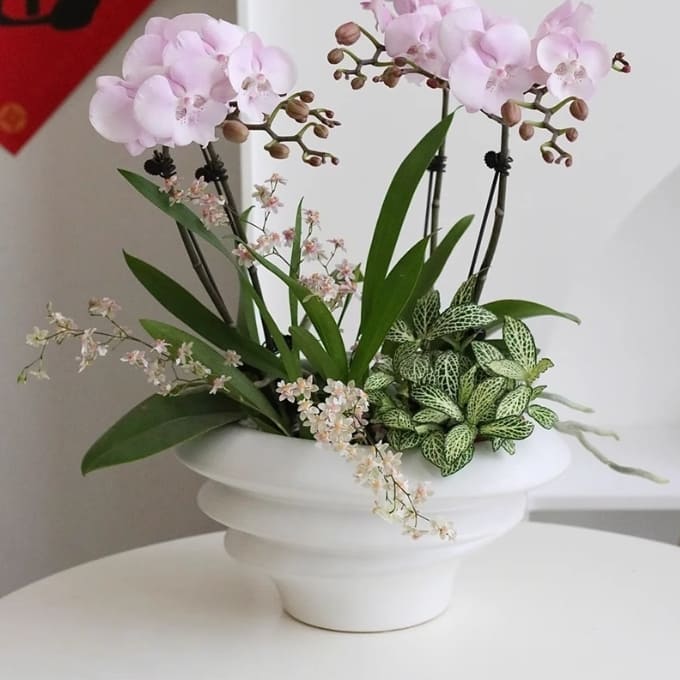
Drainage Holes: Key to Root Health for All Orchids
Share
The number, size, and placement of drainage holes in your orchid pot are critical. Here’s how to design them for epiphytic (tree-growing) and terrestrial (soil-growing) orchids.

Epiphytic Orchids (e.g., Phalaenopsis, Dendrobium): More Holes = Better Drainage
Small Pots (4–6 inches / 10–15 cm diameter):
At least 5 drainage holes at the bottom, each 0.2–0.3 inches (5–8 mm) wide.
Large Pots (8+ inches / 20+ cm diameter):
10+ bottom holes + side holes (0.1–0.2 inches / 3–5 mm) on the lower half of the pot.

For Humid Climates:
Add more holes or layer 1 inch (3 cm) of perlite at the bottom to improve drainage.

Terrestrial Orchids (e.g., Cymbidium, Paphiopedilum): Balance Drainage and Moisture
Standard Design:
3–5 bottom holes, 0.3–0.4 inches (8–10 mm) wide.
If Using Glazed Pots:
Add a 2-inch (5 cm) layer of broken clay pots + perlite at the bottom for airflow.
Add 1–2 side holes for extra ventilation.
Why?
Terrestrial roots need soil to stay slightly moist, not bone dry. Fewer holes prevent rapid water loss.

For Dry Climates:
Reduce holes to 2–3 and use unglazed clay pots to retain more moisture.
Simple Rules:
Epiphytic = More holes (bottom + sides) for fast drainage
Terrestrial = Fewer holes, bigger size
Next: Choosing between glazed and unglazed pots—how material affects your orchid’s water needs!
